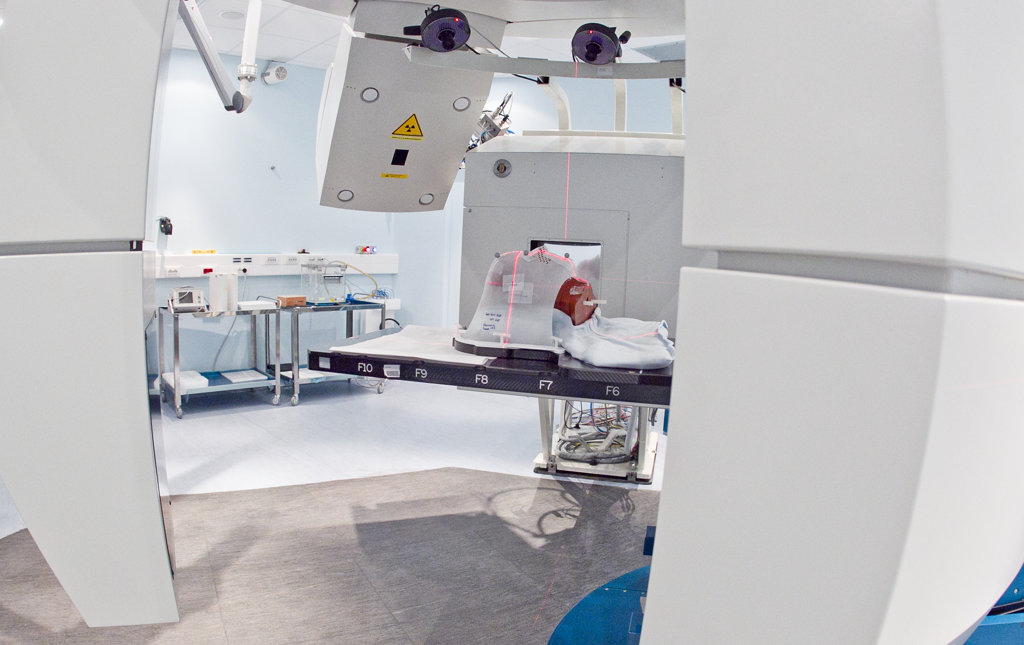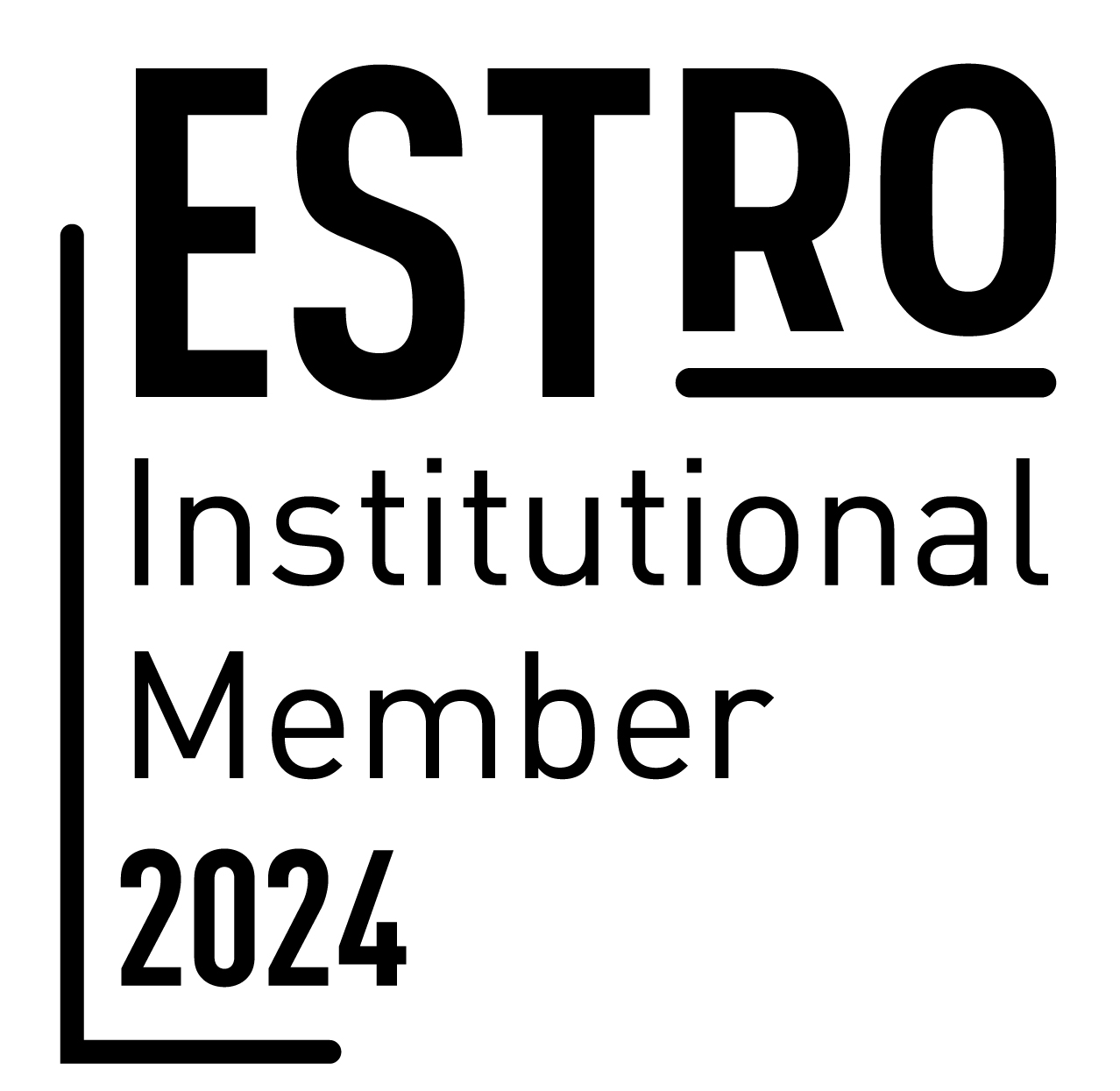
Hadrontherapy
What it is and how it works
What is hadrontherapy
Hadrontherapy is a form of radiotherapy for the treatment and cure of tumours that are often surgically inoperable or resistant to traditional radiotherapy treatments, which since 2017 has become part of the Italian Basic Benefit Package provided for by the Italian National Health System.
Unlike traditional radiotherapy based on X-rays or electrons, hadrontherapy involves the use of proton and carbon ions. These atomic particles (called "hadrons", hence the name of the therapy) have the advantage of being heavier and having more energy than electrons and, consequently, of being even more effective in destroying cancer cells.
Worldwide, only six facilities are capable of delivering proton and carbon ion hadrontherapy. One of them, CNAO (National Center of Oncological Hadrontherapy) Foundation, is settled at Pavia, Italy.
How does hadrontherapy works
In order to be effective in hitting the tumour with extreme precision, the hadrons used in the treatment of hadrontherapy must undergo a very powerful acceleration by means of a particle accelerator. At CNAO, this process occurs inside the "Synchrotron", a medical device ring-shaped of 80 metres long and connected to the treatment rooms where patients undergo therapy.
Inside the synchrotron the particle beam travel about 30,000 kilometres in half a second in order to reach the necessary energy for the therapy, after which it is directed towards the tumour. When the cancer cells are hit, the DNA of their nucleus is deeply damaged. The cells die and it is eliminated by the immune system. The great advantage of hadrontherapy is the extreme precision of this mechanism of cell death: it hits only the tumour mass and preserves the healthy tissues.
The amount of hadrontherapy sessions depends on various factors, such as the type of particle used, the type of tumour, its dimension and its location. Usually, it takes one session per day, five days a week, for a period ranging from 2 to 7 weeks.
What are the advantages
Thanks to the particular physical properties of the particles used (carbon ions and protons), hadrontherapy offers some significant advantages compared to traditional radiotherapy. These advantages are:
- Possibility to treat radio-resistant tumours. The mechanism of energy release for hadrons causes a large amount of breaks in the chemical bonds present in biological macromolecules, particularly in DNA. The latter has the property of repairing itself, but if the damage suffered is very important, the cell's repair mechanisms are no longer effective and therefore it becomes inactive and/or dies. On traditional radiotherapy, DNA damage is moderate, while in carbon ion hadrontherapy, the large number of breakages also allows to fight tumours that are radio-resistant to traditional therapy.
- Precision of treatment and conservation of healthy tissues. With hadrontherapy, the energy release, and therefore the destruction of cells, is extremely selective. This means that only cancer cells are hit with high intensity, while healthy tissues are saved. This phenomenon is made possible by the way in which energy is released during treatment: when the accelerated particle beam reaches the patient's body, it is so fast that it cannot interact with the tissues it passes through and therefore it does not damage them. However, as it penetrates and moves forwards to the target, the beam slows down gradually until it stops. Then, it is placed exactly where the tumour is, and all the residual energy of the particles is released and maximum tissue damage occurs: the so-called "Bragg Peak". Thanks to the physical properties of the hadron particles, the particle beam does not disperse (that is, it remains collimated) as it passes through the patient's body. Therefore, any damage to the surrounding healthy tissues can be further minimised.
The combination of these advantages, together with a;very high degree of personalisation of the treatment in each of its phases, leads to a significant destructive effect on tumour tissues. That is the reason why the tumour must be positioned with millimetric precision, much more than when using traditional radiotherapy.
What pathologies can be treated with hadrontherapy?
Hadrontherapy is mainly indicated for radio-resistant tumours, that is those tumours that do not respond enough or adequately to the X-rays used by traditional radiotherapy, or for tumours that are located in particularly difficult locations. Typically, hadrontherapy began its experience on tumours of the base of the skull where it is necessary to be extremely precise in the delivery of the treatment since around the tumour mass there are very important structures, nerves and vessels that cannot be damaged.
The pathologies that can be treated with hadrontherapy at CNAO are:
Tumours of the brain, skull base and spinal cord
- Paragangliomas
- Skull base chordomas
- Intracranial chondrosarcomas
- Malignant nerve sheath tumours in the skull base Intracranial solitary fibrous tumours/Hemangiopericytomas Intracranial
- Meningiomas with particular reference to meningiomas in critical locations (such as the skull base) and high-grade meningiomas
- Re-treatment of recurrent brain tumours of any histological type in patients who have already undergone radiotherapy of the brain region
- Low-grade gliomas
- Craniopharyngiomas and pituitary macroadenomas
- Cranial nerve neuromas
- Ependymomas in adult and other rare neoplasms of the Central Nervous System (with exception of adult patients with newly diagnosed medulloblastoma and any other adult pathological condition;requiring craniospinal irradiation)
- Brain stem neoplasms
- Brain tumours with indication for radiation treatment in patients with genetic syndromes
- Spinal cord tumours
- Re-treatment of tumours in already irradiated locations
Head and neck cancers and upper respiratory tract tumours
- Mucosal melanoma
- Pleomorphic adenomas
- Adenoid cystic carcinomas
- Sarcomas Salivary gland tumours
- Locally advanced paranasal sinus and nasopharynx tumours
- Ocular melanomas
- Orbital lymphomas
- Orbital tumours
- Local recurrences of head and neck cancers (all histologies)
- Re-treatment of tumours in already irradiated locations
Chest tumours
- Sarcomas
- Re-treatment of tumours in already irradiated locations
- Breasts
- Lungs
Pelvic tumours
- Malignant prostate cancer
- Recurrences of gynaecological tumours
- Recurrences of rectal tumours
- Melanoma of the uterine cervix and vagina
- Lateral recurrences
- Re-treatment of tumours in already irradiated locations
Limbs and Spinal cancers
- Chordomas and chondrosarcomas
- Sarcomas
- Re-treatment of tumours in already irradiated locations
Paediatric solid tumours
Click here for information on the treatment of paediatric patients at CNAO.
Other tumours
Solitary metastasis from: Kidneys, Melanomas (mucous membranes/skin), Sarcomas Tumours in patients with genetic syndromes
Tumour pathologies that are treated at CNAO













